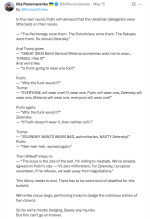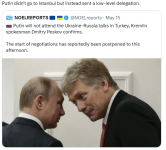ChloeTzang
Literotica Guru
- Joined
- Apr 14, 2015
- Posts
- 18,193
Food for thought in this article.....
That line I highlighted is particularly relevant.
https://xxtomcooperxx.substack.com/p/supply-chain-at-war-critical-materials
Supply Chain at War: Critical Materials and the Fight for Microelectronic Sovereignty
NOTE: Ukraine’s emergence as a defense innovation hub brings with it both opportunity and urgency. The country has the potential to supply critical raw materials and eventually serve as a friendshore partner for allied microelectronics supply chains. But it must also confront the same hard reality facing Western nations: building advanced systems without Chinese inputs is nearly impossible. Printed circuit boards, motors, and even basic components often rely on Chinese-sourced materials or refinement. As Ukraine builds out its defense industrial base, it must adopt an onshore, nearshore, and friendshore strategy—not only to serve partners but to safeguard its own supply. Strategic stockpiling of vulnerable materials like barium, tin, niobium, and tantalum will be essential. This paper is about the US. Not Ukraine. But it was Ukraine’s vulnerability that got me thinking about it. Also, it’s important to note while you read this how current US policy is completely counter to its own long term interests regarding mineral inputs.That line I highlighted is particularly relevant.
- The manufacture of microelectronic components underpins everything from national defense systems to consumer electronics. Modern warfare, AI acceleration, aerospace, telecommunications, and data infrastructure all depend on a stable and secure supply of key microelectronics.
- At the heart of this system lies a complex and globally distributed supply chain—one increasingly vulnerable to geopolitical disruption, especially due to overreliance on China for critical materials and value-added processing.
- Each component relies on a unique mix of raw materials—many of which are not widely available in the United States and must be sourced internationally.
- Semiconductors require elements such as silicon, germanium, gallium, arsenic, and indium. Conductive layers rely on copper, aluminum, tungsten, cobalt, nickel, gold, and silver. Insulating and dielectric materials are drawn from silicon dioxide, hafnium oxide, and barium titanate. Critical doping and specialized performance characteristics also depend on boron, phosphorus, and antimony. Less visible but equally important are niche metals like tantalum, niobium, manganese, and tin. Any disruption in the availability or processing of these materials creates cascading risks to entire industrial sectors.
- The United States has partial mining access to many critical inputs. Silicon, copper, gold, silver, zinc, iron, lead, lithium, manganese, germanium, gallium, and indium are all mined domestically to some degree. Tungsten, boron, antimony, and chromium are also accessible, albeit with limitations in scale. But four critical materials remain essentially out of reach without imports: barium, tin, niobium, and tantalum. These elements are either not mined at scale in the U.S. or lack refining capacity entirely.
- To close this vulnerability gap, the focus must turn to nearshore and friendshore sources.
- Canada is a linchpin in this strategy. It provides niobium, tantalum, cobalt, lithium, and refined metals including nickel and gold.
- Mexico adds key inputs like antimony, silver, zinc, and iron, and has nascent lithium projects underway.
- Australia is a global leader in lithium, manganese, and rare earths
- Brazil dominates niobium and tantalum production.
- Peru and South Africa offer zinc, tin, silver, and manganese.
- Germany and Estonia contribute refining expertise for rare earths, tantalum, and copper.
- Japan and South Korea bring high-purity metal processing and precision refining to the alliance network.
- Barium remains a singular vulnerability. China controls the vast majority of barite production, the primary source of barium. No large-scale, non-Chinese alternative exists.
- Tin is also a concern, with only minor production from Peru and Indonesia and limited commercial attractiveness to Western refiners.
- Niobium and tantalum refining remains concentrated in Brazil and Canada, with no U.S. capacity.
- Refining capacity—not just mining—is the fulcrum. Even when ally nations extract the raw materials, value-added processing frequently returns to China due to its industrial scale and permissive environmental policies. This is particularly true for gallium, indium, germanium, and rare earth elements.
- U.S. policy must focus on rebuilding refining infrastructure domestically and across aligned countries, including Canada, Australia, and Japan. Critical facilities such as the Hermosa Project in Arizona and MP Materials in California must be accelerated through permitting and investment. Without this, the U.S. remains exposed. Defense platforms, space systems, advanced sensors, and AI hardware cannot function without reliable access to purified, processed strategic materials. In a wartime scenario or global supply shock, current dependencies could become fatal bottlenecks.
- With a unified strategy that spans domestic mining, allied sourcing, and non-Chinese refining, the United States can shift from dependence to resilience. China’s dominance is not unbreakable. Only one material—barium—has no scalable substitute outside China. Every other critical material can be mined, refined, or processed through partnerships, infrastructure investment, and decisive policy.
https://xxtomcooperxx.substack.com/p/supply-chain-at-war-critical-materials



